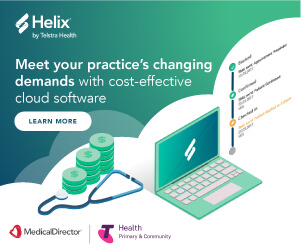Why cloud is emerging as health’s core platform
Cloud computing is set to dominate healthcare, with a new report predicting the global market for healthcare cloud computing will reach $US35 billion by 2022.
Increased patient and practitioner expectations for healthcare technology to offer anytime/anywhere access is driving the adoption of cloud technology across the healthcare space, according to a new study by BCC Research.
The report, Healthcare Cloud Computing: Global Markets to 2022, predicts the global market for healthcare cloud computing to grow at a compound annual growth rate of 11.6% from 2017 through 2022, to reach $35.0 billion by 2022. This exponential growth is linked to cloud-based solutions allowing faster access from anywhere, and any device, while offering better diagnostic quality and instant online access to patient images and reports.
Initially approached with caution by healthcare organisations, cloud computing is now becoming more widely adopted. In 2017, cloud adoption in healthcare increased globally, as cost savings outweighed potential data protection concerns. And while healthcare IT systems are historically expensive to implement, update and maintain, cloud economics is changing that by shifting from individual budgets to cost-sharing models enabled by private, multi-tenant, and in some cases, public clouds.
However, patient privacy and confidentiality remain significant concerns, with the report stressing new strategies must be continue to be developed, refined and updated to limit security breaches. Even so, more than 80% of IT organisations in healthcare are using cloud computing globally.
While hardware is vital to deliver cloud services, software is the key technology enabler, and will remain the largest market segment, the report found. This is because robust, cloud-based software offers significant benefits, allowing users to leverage the same resources in a more flexible way, and allows those applications to access a common data model (CDM), while also offering customised end-user interfaces.
“Transitioning to a cloud-computing environment will be a daunting process, as many in healthcare systems still rely on handwritten notes and paper charts,” BCC Research senior IT editor, Michael Sullivan, said. “Investing in cloud for healthcare providers represents a cultural change that will require time to realise, but even still, BCC Research expects a greater portion of total healthcare IT spending to migrate to cloud technologies.”









